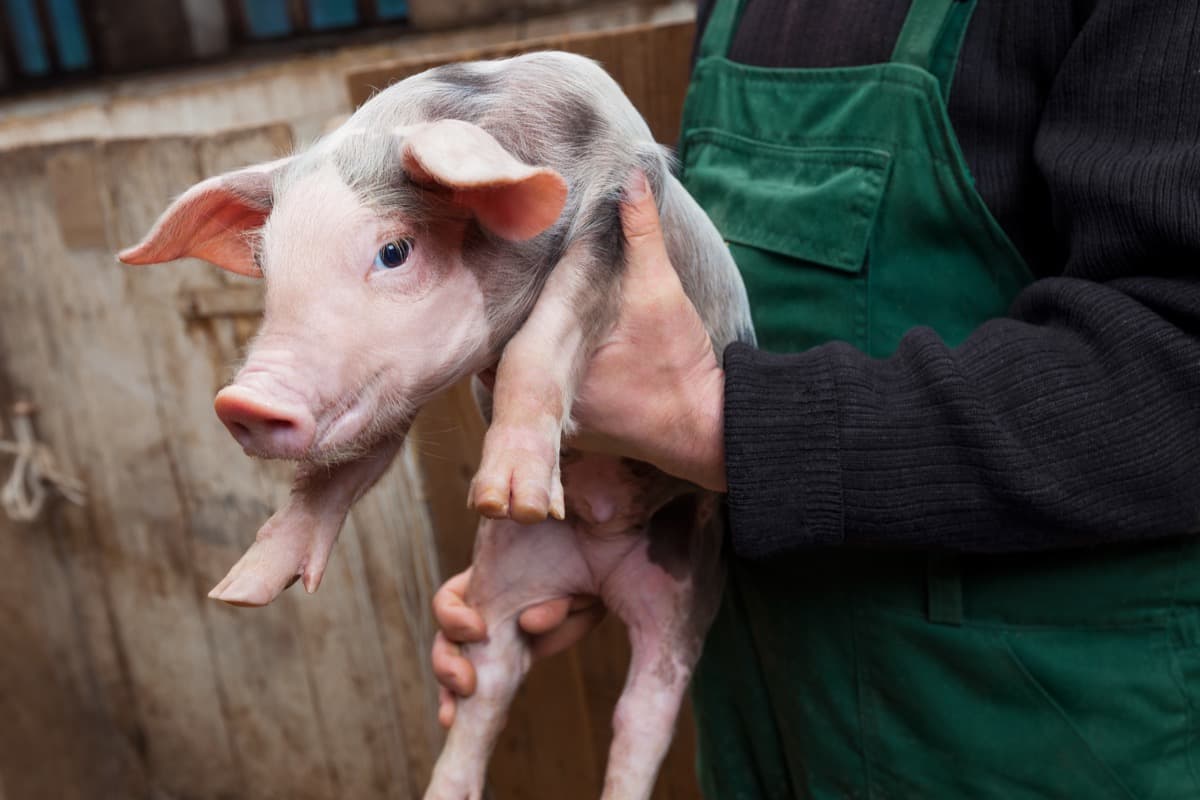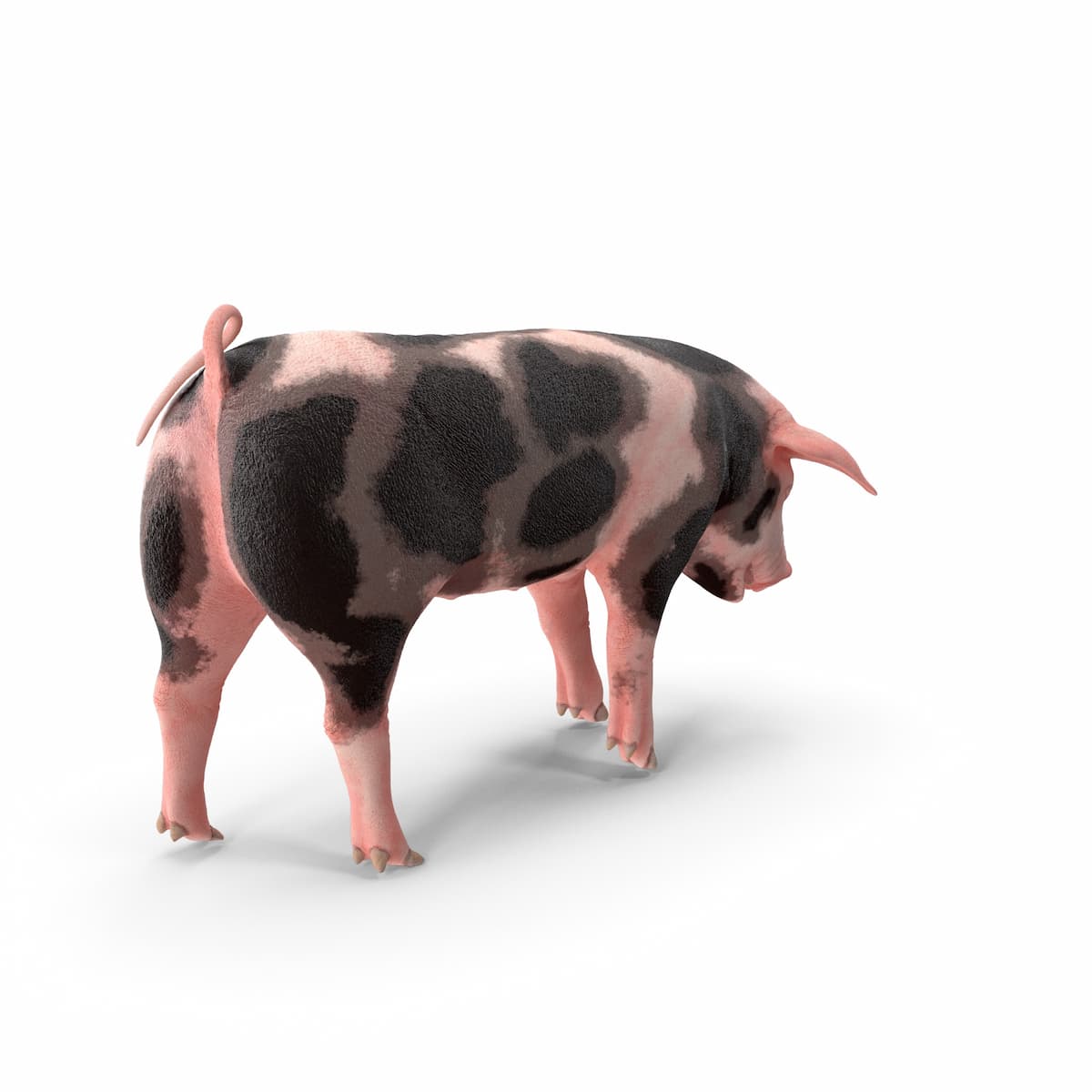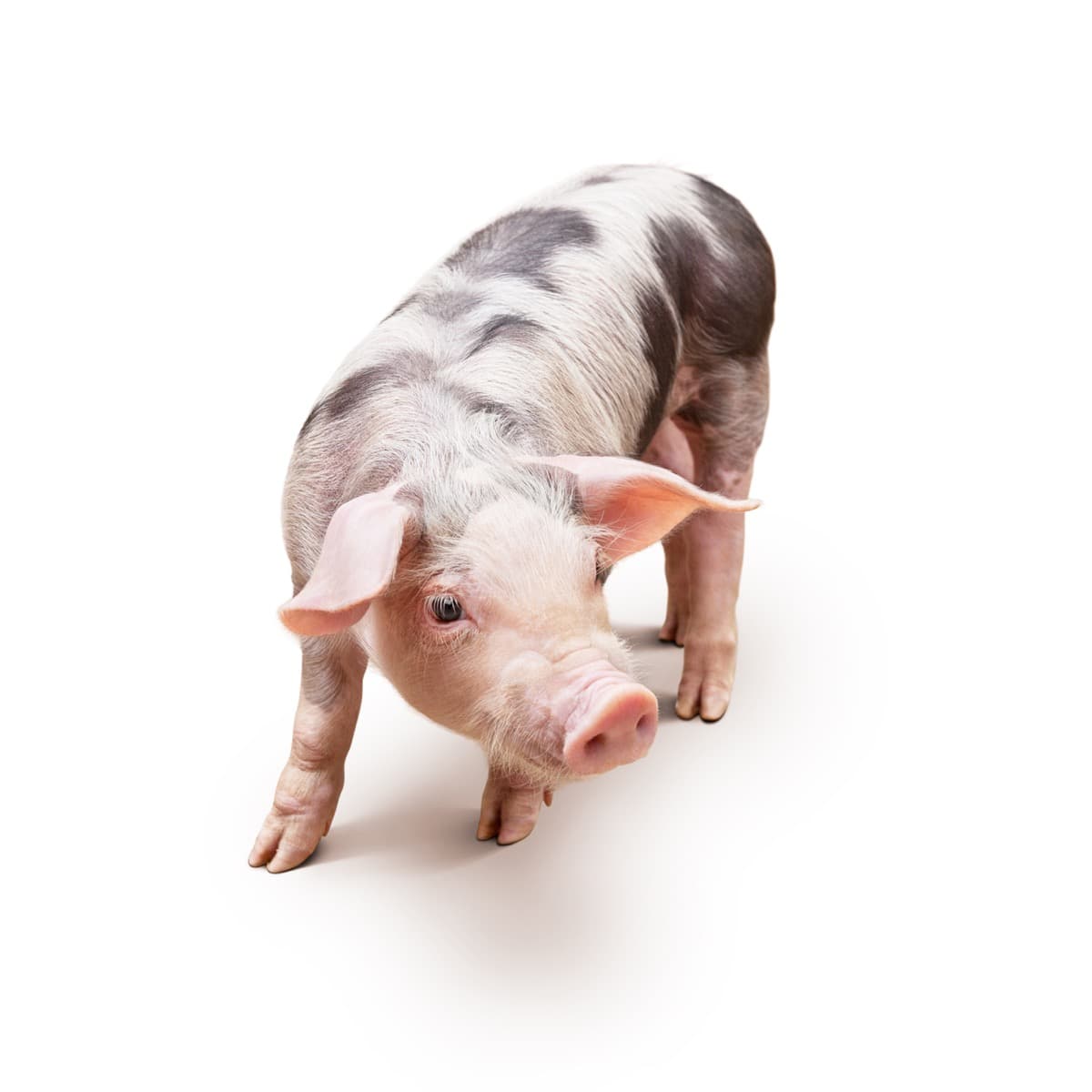Welcome to our blog on Pietrain pig facts! This article explores the origin, size, physical characteristics, pros, and cons of raising Pietrain pigs. These remarkable animals have a fascinating history and unique attributes. We’ll delve into their origins and provide accurate information on their size, markings, and coloration. Additionally, we’ll discuss the advantages and disadvantages of raising Pietrain pigs, including their meat quality and temperament.

Pietrain Pig Facts
Pietrain Pig Origin
The Pietrain pig, hailing from Belgium, is a breed with an intriguing origin. It emerged in the 1950s through a crossbreeding program involving Berkshire and Large White Pigs. The goal was to enhance the meat quality and leanness of the breed. Named after the village of Pietrain, this pig gained popularity for its excellent muscle development and efficient feed conversion. Today, it is recognized worldwide for its impressive attributes in the pork industry.
Where do Pietrain Pigs Come From?
Pietrain pigs originate from the small village of Pietrain in Belgium. This breed was developed in the mid-20th century through selective breeding efforts. Breeders aimed to enhance the meat qualities of the pigs, particularly their leanness and muscle development.
The initial crossbreeding involved Large White pigs and a local Belgian breed known as the “saddleback.” The resulting progeny exhibited desirable traits, leading to the establishment of the Pietrain breed. Today, Pietrain pigs are found worldwide and are renowned for their excellent meat characteristics and high-quality pork.
Pietrain Pig Breed Information
- Pietrain pigs are a breed of domestic pigs known for their excellent meat quality.
- They originated in the small village of Pietrain, Belgium, in the late 19th century.
- These pigs are medium-sized with a muscular build and a compact body structure.
- Pietrains have a unique coat pattern called “belted” or “piebald,” characterized by a white color with black spots or patches.
- They are highly valued in the pork industry due to their ability to produce lean and tender meat with excellent marbling.
- Pietrain pigs have a docile temperament and are known for their high feed conversion efficiency.
- They are popular among pig farmers for their fast growth rate and high meat yield.
- However, due to their lean muscle composition, Pietrains may require specific nutritional management to avoid excessive leanness in the meat.
- Breeders and farmers often use Pietrains in crossbreeding programs to improve other pig breeds’ meat quality and yield.
Pietrain Pig Size and Weight
When it comes to Pietrain pig size and weight, these animals are known for their muscular build and impressive proportions. On average, adult Pietrain pigs can reach a height of 28 to 32 inches (70 to 80 cm) at the shoulder. In terms of weight, they can range from 220 to 330 pounds (100 to 150 kg) for boars and 165 to 275 pounds (75 to 125 kg) for sows. Their robust physique makes them a substantial presence on the farm.
Physical Characteristics of Pietrain Pigs
These physical characteristics give Pietrain’s pigs a unique and attractive appearance. Their muscular build and striking coat pattern make them stand out among other pig breeds. Their full size and weight contribute to their value as meat producers. Additionally, their erect ears and short, broad snout are distinctive features that define the breed. Pietrain pigs’ sturdy legs with four toes provide stability and support for their active lifestyle.
| Characteristic | Description |
| Coat Color | White with black spots or patches |
| Body Structure | Muscular and robust build |
| Size | Medium to large-sized breed |
| Weight | Adult boars weigh around 250-300 kg (550-660 lbs) |
| Adult sows weigh approximately 200-250 kg (440-550 lbs) | |
| Ears | Erect and pointed |
| Snout | Short and broad |
| Legs | Strong and sturdy with four toes |
| Back | Slightly arched |
Pietrain Pig Coloration and Markings
Pietrain pigs exhibit distinct coloration and markings that make them easily recognizable. Their base color is white, while their skin is often dark. The most prominent markings are large, black spots scattered across their bodies, creating a unique pattern for each pig. The contrast between the white and black markings gives Pietrain’s pigs their characteristic appearance, making them visually striking animals on the farm.
Pros of Raising Pietrain Pigs
- Enhanced meat quality: Pietrain pigs are known for their exceptional meat quality, characterized by tenderness and marbling, which appeals to consumers and can fetch higher prices in the market.
- Efficient feed conversion: These pigs have a high feed conversion ratio, meaning they efficiently convert feed into weight gain, resulting in lower feed costs for farmers.
- Fast growth rate: Pietrain pigs exhibit rapid growth, reaching market weight relatively young, allowing farmers to achieve a quick turnaround time and potentially higher profits.
- Excellent carcass yield: They possess a high percentage of lean meat and a favorable meat-to-bone ratio, maximizing the usable meat from each pig and increasing overall profitability.
- Crossbreeding advantages: Pietrain pigs are often used in crossbreeding programs due to their desirable traits, such as improved muscling and meat quality, which can be inherited by the offspring, resulting in superior hybrid vigor.
- Resilience and adaptability: These pigs are known for their resilience to various environmental conditions and management systems, making them suitable for diverse farming operations.
In case you missed it: Top 10 Common Mistakes to Avoid in Pig Farming

Cons of Raising Pietrain Pigs
- High feed requirements: Pietrain pigs have a voracious appetite, requiring more feed than other breeds.
- Prone to stress-related issues: These pigs are known to be more prone to stress, which can lead to health problems and reduced productivity.
- Difficult birthing process: Pietrain sows may face difficulties during labor, requiring assistance or intervention due to their muscular build.
- Reduced marbling in meat: While Pietrain pork is lean, it may have less marbling, affecting the tenderness and flavor of the meat.
Pietrain Pig Meat Quality
Regarding Pietrain pig meat quality, Known for its lean and flavorful meat, Pietrain pork offers a fine-textured, juicy, and tender eating experience. The meat is well-marbled, enhancing its taste and juiciness. These qualities make Pietrain pigs a popular choice for meat production.
Pietrain Pig Temperament and Behavior
Pietrain pigs exhibit an active and alert temperament. They are known for their curious and exploratory behavior. These pigs require ample space to roam and engage in physical activities. Providing them with environmental enrichment is essential to prevent boredom and potential behavioral problems associated with confinement.
Pietrain Pig Feed Requirements
Pietrain pigs have specific needs to support their growth and overall health. Their diet should primarily consist of a balanced combination of grains, such as corn and wheat, and protein-rich sources like soybean meal. Providing them with adequate amounts of clean, fresh water is crucial to ensure proper digestion and hydration. Additionally, supplementing their diet with vitamins and minerals helps meet their nutritional requirements.
Pietrain Pig Health Issues
Pietrain pigs, like any other breed, can be prone to certain health issues. One common concern is stress susceptibility, which can lead to problems such as PSE (pale, soft, exudative) meat. Additionally, Pietrains may experience respiratory issues, including pneumonia.
Pietrain Pig Breeding Tips
Firstly, select healthy and genetically sound breeding stock to ensure strong offspring. Implement a well-managed breeding program with proper nutrition and housing. Consider crossbreeding options for improved traits and consult with experienced breeders for valuable insights. Regularly monitor the breeding process to maximize productivity and overall success.
Pietrain Pig Market Demand
Due to their excellent meat quality and desirable carcass characteristics, there is often a strong demand for Pietrain pigs in the market. However, it’s important to note that the cost of pigs can vary depending on location, seasonality, and specific market conditions. The price of a Pietrain pig is around Rs 14000 per 100-kilogram pig. The pricing also differs depending on gender. Sows are more costly than boars. More, depending on age, weight, health, genetics, and market demand.
Pietrain Pig Crossbreeding Options
Their desirable traits, such as lean muscle mass and fast growth, make them popular choices for crossbreeding programs. By combining Pietrains with other breeds, farmers can optimize meat quality and production efficiency.
Pietrain Pig Genetic Traits
Pietrain pigs possess several distinctive genetic traits that make them a sought-after breed. Their primary genetic characteristic is the presence of a gene known as the “RN” gene, which influences their leanness and muscularity. This gene results in a higher meat-to-fat ratio, contributing to the superior meat quality of Pietrain pigs. Breeders have utilized selective breeding techniques to enhance these genetic traits, further improving the breed’s desirability in the pork industry.
In case you missed it: Moldova Pig Farming Business Plan: Solid Strategies for High Profits

Conclusion
Pietrain pigs from Belgium exhibit distinctive physical characteristics and lively temperaments. Their compact size and muscular build make them ideal for meat production. While they offer advantages such as meat quality, their high activity levels, and specific care requirements should be considered.
- Ultimate Guide to Ossabaw Island Hog: Breeding, Raising, Diet, and Care
- Ultimate Guide to Juliana Pig: Raising Facts, Size, Diet, Care, and Lifespan
- Raising Lleyn Sheep: Disadvantages, Price, Uses, Characteristics, and Care
- Ultimate Guide to Meishan Pig: Breed Facts, Breeding, Raising, and Care
- Ultimate Guide to Teacup Pigs: Raising, Diet, Lifespan, Cost, and Care
- Guide to Raising Poll Dorset Sheep: Facts, Profile, Characteristics, Uses, and Care
- Ultimate Guide to Bighorn Sheep: Characteristics, Diet, Lifespan, Breeding, and Lifecycle
- Ultimate Guide to Raising Katahdin Sheep: Farming Facts, Breed Profile, Uses, and Care
- Ultimate Guide to Raising Oreo Cows: Belted Galloways Farming Facts, Profile, Uses, and Care